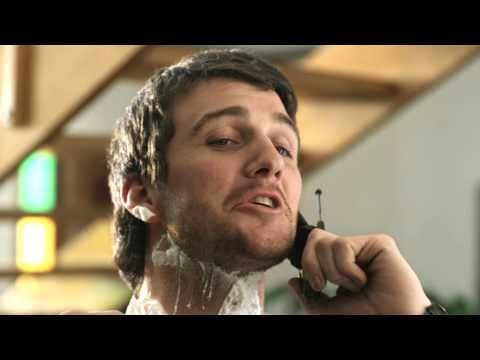🍱 Do Nothing Much with L & P; Dive into Data for stories; Helping people = helping your brand
Make Hay While The Sun Shines
Hello and welcome back to The Marketing Kable, where I'm taking you along on my journey to discover ideas, voices and campaigns that can inspire us.
something to watch
do so much with nothing much.
"What are you guys up to?"
"Nothing much."
This could pretty much be an exchange from real when my friends and I are hanging out, and my parents come in to say hello.
This ad for New Zealand's favourite soft drink has a group of friends calling each other to meet up for "nothing much". Each one is terribly excited when they hear that the plan is to do "nothing much", and they show up with a bottle of L&P, which is established as THE drink for this plan.
I loved this ad so much (my favourite is bubble wrap guy) that I watched it multiple times, and I think you will too. And, of course, I shared it with my friends with "THIS IS US".
Here's what stood out to me:
Know your customers. Empathise with them: The makers of this ad have clearly done their research - they know what role their product plays in their customers' lives, how it is perceived, and the associations it evokes. The brand gets its core customer, and it shows.
Less is more. Nothing much is said, yet the message is loud and clear. The ad uses cultural cues and subtle hints to double down.
"Well, if you're doing nothing, do you wanna help me?" one of the friends is asked, presumably by his partner.
"We're not doing nothing; we're doing Nothing Much", he responds with a meaningful head nod.
This conversation is enough to distinguish Nothing Much from its idle cousins and clearly communicates the tone and vibe of the hangout to come, with L&P centre stage.
something to read
dote on data. When it comes to storytelling, lots of things can go very, very wrong. Maybe you don't get your core customer right, or maybe you end up confusing people instead of making them want to buy your product, or, what is perhaps the worst case scenario, your approach is completely tone-deaf and ridiculous, leading to mass backlash (here's looking at you, Pepsi x Kendall Jenner).
Storytelling is tough, so the ones who DO get it right deserve to be celebrated (like the makers of Nothing Much). One of the most reliable and steadfast ways to get your storytelling right is to use data.
In this blog post, Zontee Hou from Convince and Convert tells you why you must use data in your content marketing.
Your content is more credible: Notice how quoting a statistic makes any argument more believable. Data provides a solid anchor for information and adds credibility to what you're saying. Your content feels well-researched and trustworthy. Include specific data points, surveys, or analyses in your content marketing to gain audience trust.
Your content shines: Data will set your content apart whether you're presenting your own data or uncovering trends in your industry, or sharing old stats with a fresh perspective. By leveraging data, you can generate press coverage, spark social conversations, and boost your brand's visibility.
Data tells the story: On its own, data is dry, but combined with storytelling its memorable. Instead of just throwing numbers at your audience, find compelling questions to ask and use storytelling techniques to make the information resonate. Find the emotional connection and relevance in your data; you'll help your audience understand why it matters and build trust along the way.
something to listen to
position like a pro. Brand Positioning is one of them tricky marketing things that can make or break your strategy. For noobs like us, it can be tough to grasp what exactly it means. Especially when so much of the information out there seems to imply that it's all about brands going ME! ME! ME!
To find a humane take, one naturally turns to Seth Godin. In this snippet of an interview with Marie Forleo, Seth describes positioning as a service that brands offer to their customers.
Positioning as a service is all about putting the needs of your customers first. Instead of trying to stand out from the crowd, you focus on helping people make informed choices in a noisy world.
Let's draw from Seth's example. Imagine you're a piano teacher. Instead of just trying to be different for the sake of it, you think about the problems your potential students have. Maybe they're overwhelmed by all the options and don't know which teacher to pick. Your job is to offer a service that helps them see their choices more clearly.
You can do this by creating multiple ways to set yourself apart. For example, you could offer different price ranges or teaching styles. Maybe you specialize in jazz or classical music. By drawing these "axes" and looking at the gaps, you can find a unique combination that no one else is offering.
When someone comes along who fits your unique positioning, you're ready to serve them wholeheartedly. But if they're looking for something that doesn't match what you offer, you're not going to try and convince them otherwise. Instead, you'll happily point them in the direction of another teacher who can meet their needs.
As a brand, make promises to your audience (the ones you know you CAN fulfil) and keep them. If you can't, wish them well and let them move on. That's what positioning as a service is all about — serving your customers and meeting their needs, no matter what.





